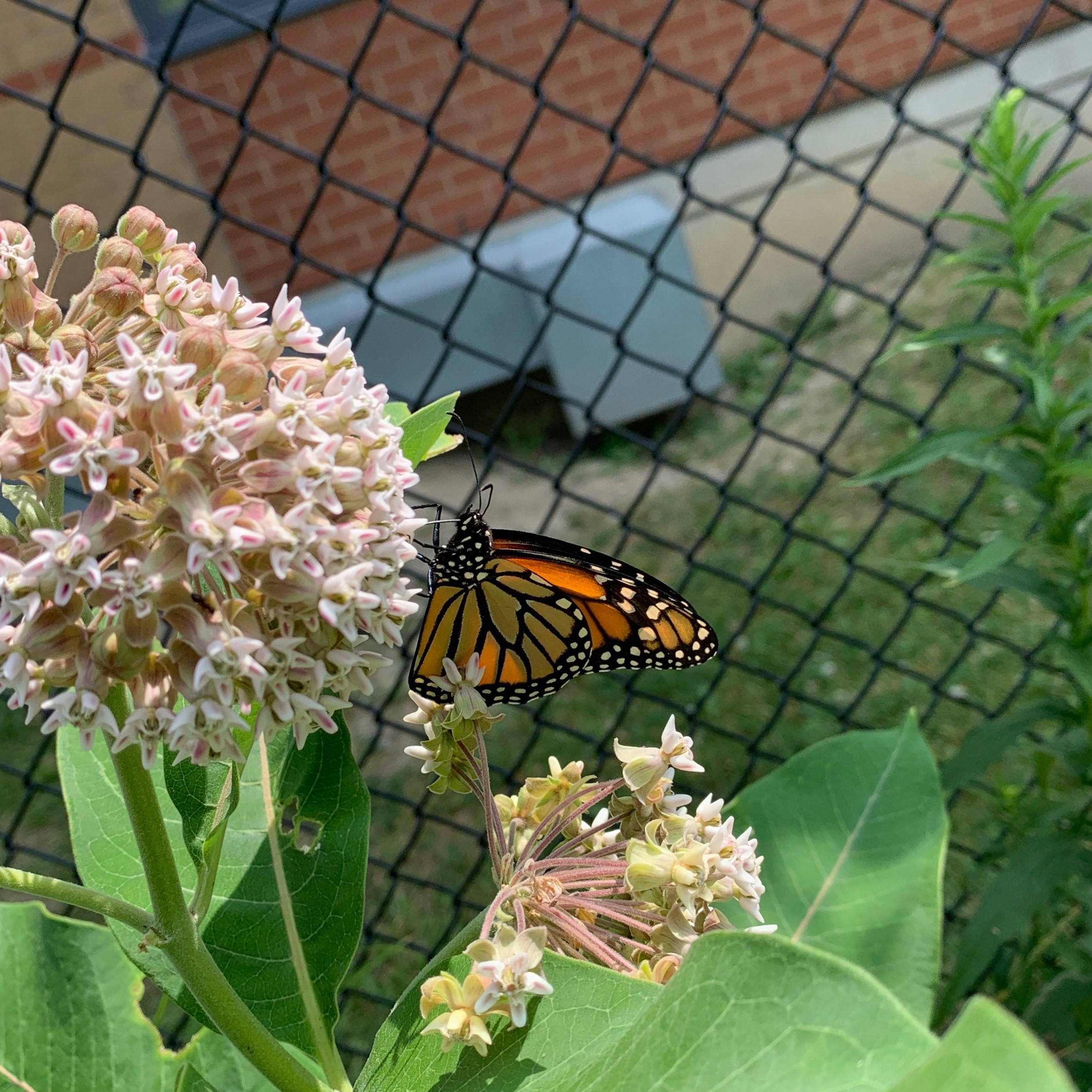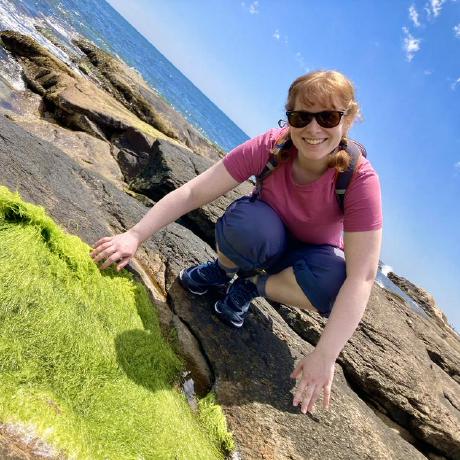Research
In my PhD, I applied concepts from spatial ecology and population genetics to test the hypothesis that the spatial configuration and environmental conditions of urban areas influence adaptive and non-adaptive evolutionary processes in a native plant species of high conservation value, Asclepias syriaca (common milkweed).
Ok, but what does this really mean? Read on:

Chapter 1
How do urban environments and a green corridor influence plant-pollinator interactions in A. syriaca and its pollinators?
Less than 100 years ago, many researchers viewed cities as “anti-life”. In the 1970s, however, scientists began embracing the idea that cities were actually places where flora and fauna could, and did, survive. Since then, the field of urban ecology has bloomed. We have learned much about which species easily take to city life and which struggle to find habitat or food; how urban-dwelling species navigate our roads and neighborhoods; when they emerge from the soil and bloom, and at what time they venture out from their homes to find food.
What’s left to discover? A lot! Among our many questions, we’re still asking how urbanization impacts interactions among species.
We set out to address this question by investigating how Toronto’s urban landscape impacts interactions among plants and pollinators. We observed which pollinators visited A. syriaca in urban environments and estimated reproductive success in these plants (how much fruit did they bear? etc.). We also brought up questions about how elements of the urban landscape itself impact these species interactions by comparing these observations to those occurring by a green corridor.
The results were complicated! The takeaway message? Urbanization, green corridors, and pollinator communities can shape the reproductive investment and fitness of native plant populations in complex ways!
Read the published paper in Urban Ecosystems here, read a breakdown of the project here, and explore the code on Github here.
Chapter 2
To what extent do urbanization and a green corridor influence genetic divergence in phenotypic traits in A. syriaca populations?
Many species have adapted to city life. I asked, has common milkweed, the Monarch butterfly’s favorite host plant, adapted to Toronto’s urban jungle? To answer this question, my first step was to test for genetic differences between urban and rural A. syriaca populations (genetic divergence). After all, if I was to detect adaptation, I’d need some evidence that the urban plants were genetically different from the rural ones, regardless of how those genetic changes impacted their fitness. After observing more than 20 traits in ~1000 plants during a 4-year common garden experiment, I found very little evidence of genetic divergence among the urban and rural populations. This suggested that common milkweed had not adapted to Toronto in these traits at this point in time. I also sought to test whether proximity to an urban green corridor impacted genetic divergence in phenotypic traits. Looks like it doesn’t!
Read the published paper in Scientific Reports here, read a breakdown of the project here, and explore the code on Github here.
Chapter 3
How does urbanization impact non-adaptive evolution in A. syriaca?
The results of my second chapter still left many questions. So, I turned my focus to the other side of evolution: the non-adaptive evolutionary processes, gene flow and genetic drift. I then asked how urbanization impacts genetic diversity and differentiation in A. syriaca. How might these forces be preventing adaptation from occurring?
This information would shed light on how city life impacts non-adaptive evolution and provide a clearer “big picture” view of how city life impacts evolution in general.
I collected leaves from 256 common milkweed plants spread throughout the GTA, then sequenced about 1% of their genome (don’t worry, that’s still plenty of information to explore!). Several months of bioinformatic analysis suggested that urbanization had not substantially influenced gene flow or genetic drift in these plants, which appeared to form a single genetic population (instead of, say, urban and rural groups). Generally, our findings suggested that this population had been minimally affected by the transition from rural to urban habitat. Instead, anthropogenic activity prior to urbanization, such as precontact Indigenous inhabitation and colonial settlement, may have been key players in this population’s ecological and evolutionary history.
Read the published paper in Ecology and Evolution here, and explore the code on Zenodo here.
Introduction to Urban Evolution
Click this link to learn more about urban evolution, through a Storymap!

